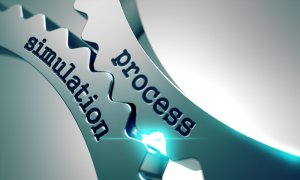Introduction
A trading system is a set of rules to enter and exit a financial market without human intervention. It could also generate entry signals even when the discretionary trader could not enter the market. However, what should be the first step to create and design a trading system? In this educational post, we will review how to start to create a trading system.
Getting Started
Similarly to any business project, a trading system starts with an idea. This idea could arise from different sources, such as seminars, forum conversations, or specialized magazines, among other sources.
Once the idea is defined, the developer should create a conceptual model of the trading system, where the developer should describe the basic criteria the system should include. After this process, the programming task must incorporate the following rules:
- An entry method,
- The exit criteria, and
- The money management formula.
The exit criteria must contain rules corresponding to “risk management” as the initial stop loss level, the final stop or a trailing stop rule, the exit profit target level, and how much money will risk in each trade. Also, they must contain “money management” rules as the position size on each trade. In other words, the system developer must consider that a viable trading system should provide an adequate risk and money management criterion.
The next question to address is, what timeframe should be traded? In general, retail traders tend to think that intraday trading involves less risk than swing trading. However, as the Dow Theory states, the primary trend tends to prevail over the secondary and minor trends. In this context, an intraday trading system might require more monitoring than a swing trading system.
Once a timeframe to trade is chosen, the next decision is what market to trade? The market to trade should be determined in terms of its liquidity and volatility. The systematic investor should consider which liquidity and volatility fit best the trading system so that orders sent to the market hold the needed volatility to ensure a movement in an adequate time lapse.
The Importance of Data Provider
Once the systematic investor chose the market to trade, the developer must define which market data provider will be used by the system to perform market analysis/testing and trade execution.
A market data provider without a trustable price data could drive the system investor toward problems in the trading system execution, such as in the orders execution process. For instance, Jaekle and Tomasini, in their work, comment that the most popular commodities data providers are CSI (www.csidata.com) and Pinnacle (www.pinnacledata.com); however, both the trading system investor and system developer must evaluate which data provider is best for the market to be traded.
Conclusions
In this educational article, we presented the firsts steps to build a trading system, which, as any business project, starts with an innovative idea or is the result of the investor’s creativity. Once the conceptual model is developed and the programming tasks completed, the trading developer must evaluate and validate the trading system, through back and forward tests analysis, before using real money. This stage will be presented in the next educational article.
Finally, the following figure summarizes the process of developing a trading system.
Suggested Readings
- Jaekle, U., Tomasini, E.; Trading Systems: A New Approach to System Development and Portfolio Optimisation; Harriman House Ltd.; 1st Edition (2009).







